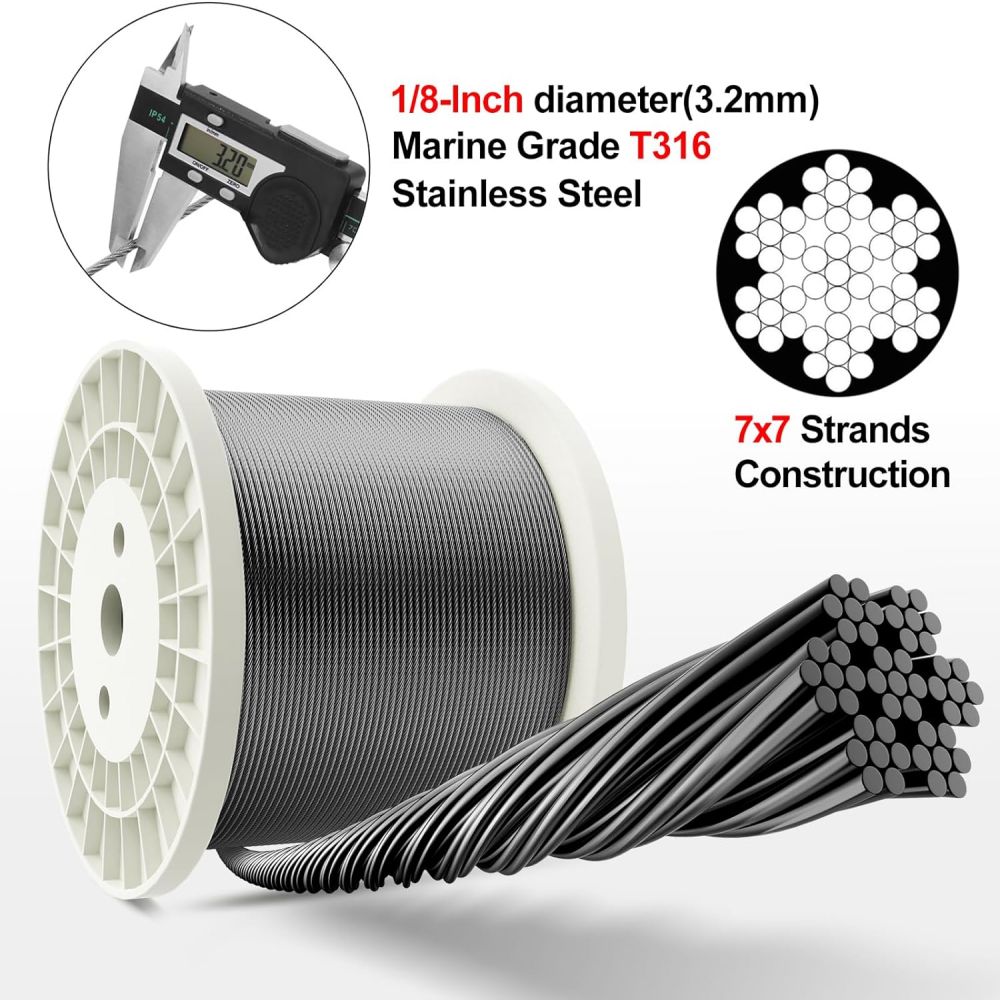
Stainless wire ropes are vital for their strength and corrosion resistance. Blogs offer insights for professionals and DIY enthusiasts on their uses and benefits. Here’s what you can typically expect to find in these blogs:
Axial loading is a key concept when evaluating the primary force encountered by sling wire ropes. This force is applied along the rope’s axis and significantly impacts the rope’s structural behavior, influencing the distribution of forces across the strands and the resulting stresses and deformations.
For businesses that use or purchase wire ropes, it is essential to prioritize those designed to handle axial forces efficiently. Ensuring these ropes can manage such forces enhances their performance and durability, leading to safer and more reliable operations.
Finite Element Analysis (FEA) plays a critical role in simulating and examining the behavior of sling wire ropes under various loading conditions. This method offers insights into the interactions between individual wires within the rope and their overall response to axial forces, providing a basis for selecting ropes with optimal structural properties. Understanding these results helps ensure that the chosen ropes can withstand the operational stresses they will face, enabling more informed and confident purchasing decisions.
Choosing the appropriate clamp for your wire or cable size and specific application requirements is essential. Using the wrong size or type of clamp can compromise the security and effectiveness of the connection, potentially leading to system failures or hazards.
Uniformly distributing axial force across the wire rope ensures even stress distribution in practical applications. The linear contact model predicts consistent axial strain and von Mises stresses throughout the wire rope. However, incorporating nonlinear frictional contact into the model shows improved stress distribution due to friction between wires, resulting in better load-bearing capacity and reduced deformation, particularly on the outer wires.
Businesses should prioritize wire ropes designed with frictional contact considerations for superior performance. Manufacturing wire ropes to optimize frictional interactions can significantly enhance their durability and safety.
Applying axial strain incrementally to wire ropes underscores the importance of strain management in maintaining structural integrity. Results indicate that nonlinear models, which account for frictional effects, provide superior stress distribution compared to linear models.
This suggests that wire ropes capable of effectively managing axial strain are better suited for high-stress applications, an important consideration for your operations. For businesses, selecting wire ropes tested and proven to handle axial strain efficiently can lead to improved performance and longevity.
Finite Element Analysis under axial loading conditions, whether using linear bonded or nonlinear frictional contact models, provides valuable insights into stress distribution and deformation behavior. The findings highlight the importance of considering frictional effects and optimizing wire configuration to enhance the performance and safety of sling wire ropes.
Understanding the impact of axial forces and strain on wire ropes, combined with advanced analysis methods, ensures that businesses can select and utilize ropes that offer superior safety, reliability, and durability in their operations.

Stainless wire ropes are vital for their strength and corrosion resistance. Blogs offer insights for professionals and DIY enthusiasts on their uses and benefits. Here’s what you can typically expect to find in these blogs: